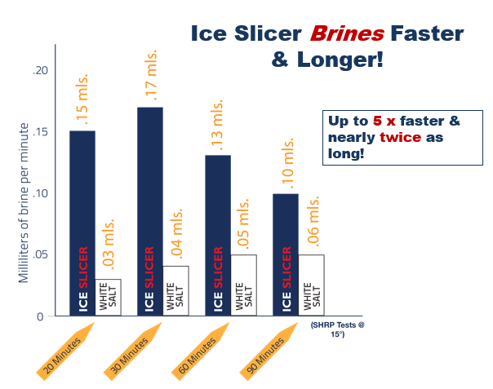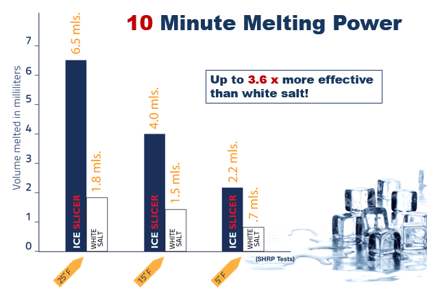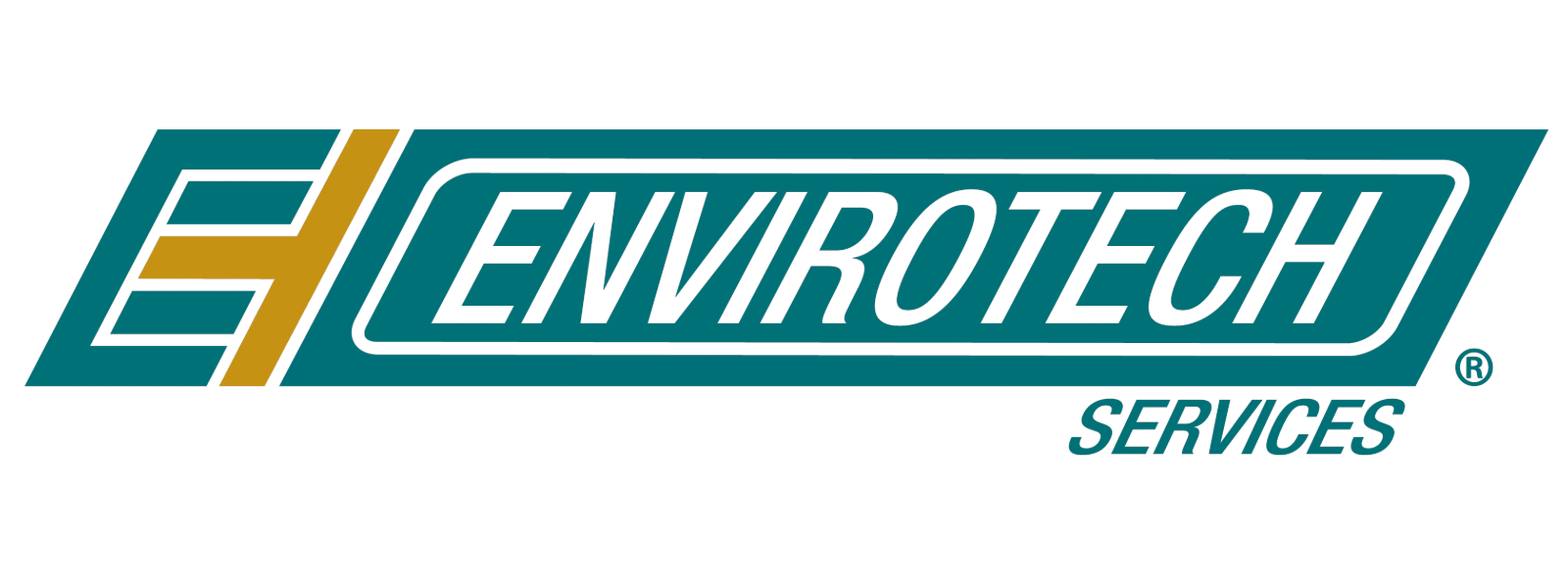
Granular deicer, Ice Slicer®, has increased power to break the bond of snow and ice from various surfaces compared to traditional deicing solutions. Ice Slicer is a homogenous (non-blended) solution primarily composed of four complex chlorides and 50+ trace minerals. Although the initial price of Ice Slicer might be higher than traditional solutions, the superior performance decreases overall costs because of lower application rates and reduced manpower. Additionally, the natural corrosion-inhibitors crystallized within each granule prevents excess damage to machinery, which decreases the overall cost of ownership.
Don't just take our word for it. Let's look at study results comparing Ice Slicer's performance to white salt, solar salt, and sand.
White Salt
Studies comparing Ice Slicer and white salt concluded that Ice Slicer has superior brine per minute, faster melting power, and less corrosion damage.
When testing brine per minute, the study looked at results after twenty minutes and ninety minutes at 150F. In the first twenty minutes at 150F, Ice Slicer showed 0.15 milliliters of brine per minute, whereas white salt only had .03 milliliters of brine per minute. Ice Slicer continued to outperform white salt. At ninety minutes, Ice Slicer had a better brine power by .04 milliliters per minute.

Figure #1: Comparison of Ice Slicer and White Salt Brine Per Minute
Studies testing melting power looked at two timeframes: ten minutes and sixty minutes, and temperatures ranging from 5-250F. The results revealed Ice Slicer is up to 3.6 times more effective than white salt melting power over the course of ten minutes from temperatures ranging 250F to 50F. When tested for a longer period of time in the same temperature range, Ice Slicer is up to 2.3 times more effective than white salt melting power. It was reported that plow drivers were able to service 40-100% more lane miles per truckload after switching from white salt to Ice Slicer.

Figure #2: Comparison of Ice Slicer and White Salt Melting Power after 10 Minutes

Figure #3: Comparison of Ice Slicer and White Salt Melting Power After 60 Minutes
Ice Slicer can also prevent corrosion damage to vehicles that is typically caused with white salt. “Ice Slicer tested 38% less corrosive than white salt” (UDOT). Customers have reported a decrease up to $200,000 spent on guard rails! Another way Ice Slicer reduces overall cost is because it can outperform white salt even at a 20-50% lower application rate
Solar Salt
Recently, it has been claimed that solar salt treated with magnesium chloride and coated with red clay is better and cheaper solution than Ice Slicer. Michigan Tech University conducted a study comparing the melting capacity of salt and Ice Slicer. It was revealed that Ice Slicer melted 28% more after one hour at 200F. Ice Slicer melted 43% more after one hour at 50F. Additionally, solar salt leaches when corrosion inhibitors are sprayed on the surface.
Sand
A common deicing solution is sand. Sand provides instant traction, high visibility, lower front-end cost, is non-corrosive, etc. It might look like a viable solution at first, but the negative aspects of sand are often overlooked. Unlike Ice Slicer, sand is not an active material which means the deicing capabilities are almost non-existent.
It might be non-corrosive, but it clogs sewers and drains as well as causes damage to windshields, which can add up to be a costly expense. The damage sand causes combined with the cleanup, mixing costs and high application rates leads to a higher overall cost than Ice Slicer. In most situations, Ice Slicer does not need to be mixed with sand or grit because of Ice Slicer’s natural traction capabilities. Overall, Ice Slicer is an environmentally sensitive, cost-effective, and powerful deicing solution that outperforms competitors time after time.
To learn more about how Ice Slicer can better suit your needs, please visit our website or speak with a representative at 800-369-3878.
Edited on Monday January 18th, 2019 by Maren Garcia
Removed photo
Similar Article:Ice Slicer the Value Picture: Consider Total Cost of Ownership When Choosing a Deicer

